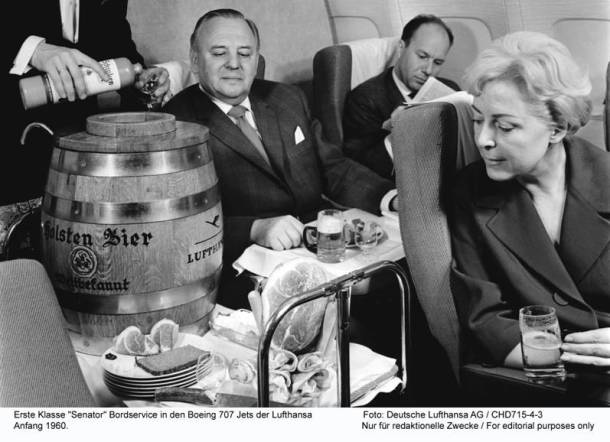It’s stories like this in The Australian, about the continuing shrinking of premium travel benefits by cost cutting in managed corporate travel accounts, that give the combatants Qantas and Virgin Australia a shared external enemy.
The process has of course been underway for many years, and for even longer in Europe and North America. And it was well underway on both sides of the Atlantic even before the low cost models practiced in different manifestations by the like of Ryanair, easyJet and Southwest suddenly turned into the would be giant killers they became around the turn of the century.
From an airline perspective managed corporate accounts represent opportunties to capture the fares that apply to tens of thousands of trips a year by successfully selling to a single account manager. Winning six or seven managed accounts in the recent past meant winning up to to several hundred thousand trips if the client was a major bank, insurance company, government department, grocery retailer or sporting club.
But things are going wrong with the emphasis airlines like British Airways, or American Airlines, or the full service Australian carriers are placing on service standards to win the business of those accounts.
- Companies are less prepared to pay for the quality of service they did before, although frequency and punctuality remain vital,
- The volume of corporate travel may decline as business activity and confidence retreats, and
- Exclusivity in providing bookings to large managed accounts is being increasingly broken by corporate accounts which chase the best-fare-applicable, and put rules on executives requiring them to re-time their meetings or itineraries in order to fit in with the availability of the cheaper fare.
This last modification of behaviour by corporate account managers might not mean a change of airline group, but it can mean the avoidance of peak hour pricing and the dilution of yields through customer acceptance of cheaper but more conditional fares, and booking on the low cost Qantas brand Jetstar or Virgin’s equivalent Tigerair.
The fare matrix that some executives now have to navigate can also mean booking an outbound flight on a different airline to the return flight. People are starting to do things like fly Qantas, fly Tigerair, fly Jetstar, fly Virgin, all between leaving the office and coming back a few days later.
These changes in managed account behaviour may already be playing havoc with the resources Qantas and Virgin have invested in value added improvements in seating, cabin amenity, club rooms and in-flight meals and refreshments.
The response of Virgin and Qantas seems to be to condition business travellers to embrace the full service option by keeping a perception of value in the more costly fare, even if using them seems to offer less than it did by way of comfort and amenity in the 80s.
Managing that gap between the crowded but utilitarian low fare format product and the reduced premium content of the higher fare product is the challenge, and while standards are exceptionally high in Australia, and in some overseas carriers, the migration from full service to cheap in air travel is increasingly apparent over shorter distances world wide.
The fitful trend toward longer haul premium economy services around the world shows that the process is also happening away from the natural territory of the single aisle short haul low cost carrier, albeit more slowly.
Until recently the glue holding customer loyalty together was a frequent flyer program. But the adhesive power is being torn by the pestering commercialisation of the programs, with rewards being more like up-selling pitches and the rising levels of solicitations to buy this or that from a non-flying supporter of what is supposed to a loyalty enforcer becoming just another junk email.
The debasing of loyalty programs also debases the attractions of full service fares.
Quite how, or to what degree these factors will change air travel in 2014 remains to be seen.
But identifiable business travel volumes are widely expected to follow the economy downwards. A cheap fare, stored on a mobile device and scanned at the gate of a turn-up-or-lose-it low fare airline flight might well become the new black in flying, cutting the heart out of investments in lounges and value added cabin product.
It’s not something the writer looks forward to. But it seems to be where we are headed.
How it used to be. This archived image shows a beer barrel custom made for Lufthansa about to be tapped in the typical first class cabin being prepared for a three hour lunch flying westbound in daylight from Frankfurt to JFK.









Crikey encourages robust conversations on our website. However, we’re a small team, so sometimes we have to reluctantly turn comments off due to legal risk. Thanks for your understanding and in the meantime, have a read of our moderation guidelines.